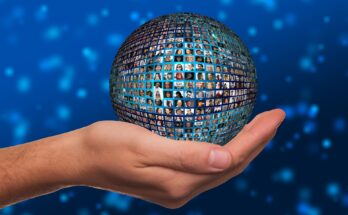
Generative AI and the Creative Industries: A New Era of Innovation or a Threat to Creativity?
In recent years, generative AI has become one of the most transformative and controversial advancements in technology. From AI generated artwork and music to automated content creation, these tools have significantly impacted creative industries. But while some see this as a revolution, others fear it threatens the authenticity and livelihood of human creators.
The Rise of Generative AI in Creativity
Generative AI refers to artificial intelligence models capable of producing new content, whether text, images, video, or music, based on training data. Tools like ChatGPT, Midjourney, DALL-E, and RunwayML have made it easier than ever to create high-quality content with minimal human input.
For businesses, this means faster content generation, reduced costs, and the ability to scale creative projects like never before. Brands are using AI-generated visuals for marketing campaigns, news outlets are experimenting with AI-written articles, and musicians are incorporating AI-generated compositions into their work.
The Ethical Dilemma: Assistance or Replacement?
While the capabilities of generative AI are impressive, many artists, writers, and musicians worry about their future. AI’s ability to mimic artistic styles has led to debates about originality and ownership.
For instance, Zelda Williams, the daughter of Robin Williams, criticised AI recreations of her late father’s voice, calling it an ethical violation. Similarly, Studio Ghibli-style AI art has faced backlash for appropriating human-created aesthetics without genuine artistic input. These examples raise important questions about consent, copyright, and the value of human creativity.
Challenges and Opportunities
Generative AI presents both risks and opportunities:
Opportunities:
- Enhanced Creativity: AI can serve as a powerful brainstorming tool, assisting artists in developing new ideas and compositions.
- Accessibility: Individuals with limited artistic or writing skills can now bring their visions to life using AI-powered tools.
- Efficiency: AI can automate time-consuming tasks, allowing creatives to focus on refining and enhancing their work.
Challenges:
- Job Displacement: Many fear that AI will replace human jobs, especially in writing, graphic design, and animation.
- Copyright Issues: AI-generated works often draw from existing human-created content, leading to legal and ethical concerns.
- Loss of Artistic Value: Some argue that AI-generated content lacks the emotional depth and intentionality of human-made art.
The Future of AI in the Creative World
The integration of AI into creative industries is inevitable, but how it is regulated and ethically implemented will determine its long-term impact. Policymakers, artists, and tech companies must work together to establish guidelines that protect human creators while embracing AI’s potential.
Rather than viewing AI as a replacement, creatives can see it as a tool—one that enhances their work rather than diminishing it. The future of creativity may not be about AI vs. humans, but rather about how the two can coexist to push the boundaries of artistic expression.
What do you think? Is generative AI a tool for innovation, or does it pose a threat to creativity? Let us know in the comments!


